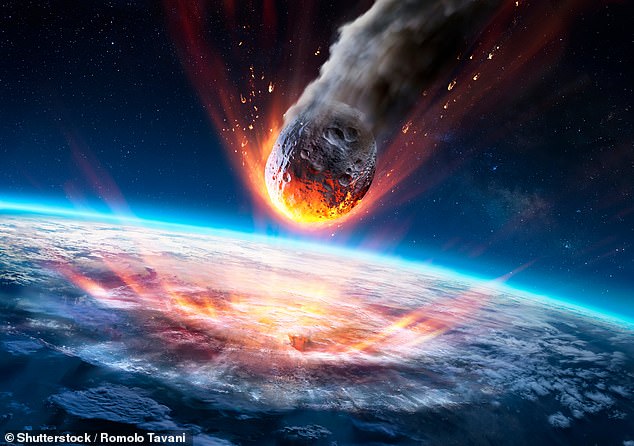
Can NASA Avert the 2032 Impact of 2024 YR4 Asteroid? Shivali Best Explains
Okay, I need to shorten this article about the asteroid 2024 YR4 to around 600 words. The original is quite lengthy with a lot of details and several images. Let me start by skimming through to identify the key points.
First paragraph introduces the asteroid and its size compared to Statue of Liberty or Big Ben. Next, the probability of impact, which decreased from 3.1% to 1.5%. Mentions potential impact in 2032, the need for NASA to track it, and Bruce Willis reference as a fun element.
Then there are sections on size, potential impact locations, destruction estimates, uncertainty in predictions, NASA’s ability to deflect, and nuclear options. Also, a part about Elon Musk and SpaceX. The article includes images with captions, so I should mention adding some pictures but can’t include actual images here, just note their placement.
I need to condense each section without losing essential info. Start by summarizing the main facts: size, probability, timeline. Then address each subheading concisely. Maybe combine some sections where possible. For example, merge how big it is and where it could hit into brief points. The nuclear option and DART mission can be summarized together under deflection methods.
Check word count periodically to stay near 600. Remove redundant sentences, use bullet points if needed for clarity. Replace longer explanations with shorter phrases. Keep the FAQs structure but simplify the answers. Remove less critical details like specific cities in the risk corridor unless they’re major ones.
Ensure the flow is logical, moving from introduction to details, addressing chances, deflection possibilities, and concluding with a light-hearted note about going to work or Elon Musk. Keep the tone informative but concise. Replace technical jargon with simpler terms where possible. Verify that all key data (size, probability, impact effects) are included but presented briefly.
Make sure references to images are noted for placement but without actual image tags. Also, check for any important nuances, like the fact that the probability might drop to zero with more data, which is crucial for context.
"City-Killer" Asteroid 2024 YR4: What You Need to Know
A newly discovered asteroid, 2024 YR4, has sparked global concern due to its potential to strike Earth in 2032. Discovered in December 2024, this “city-killer” space rock measures 130–300 feet (40–90 meters) in diameter—comparable to landmarks like New York’s Statue of Liberty or London’s Big Ben. NASA estimates a 1.5% chance (1-in-67) of impact on December 22, 2032, down from earlier predictions of 3.1%. While the risk is low, here’s a breakdown of key questions.
Size and Scope
2024 YR4’s size ranges from three-fourths of Nelson’s Column’s height to matching Big Ben. If it hits, the asteroid could release energy equivalent to 7.7 megatons of TNT, either creating a 3,000ft-wide crater or causing devastating mid-air explosions (airbursts) capable of flattening cities. Coastal impacts might trigger localized tsunamis.
Where Could It Land?
NASA-funded scientist David Rankin mapped a “risk corridor” stretching from northern South America across the Pacific to sub-Saharan Africa and Asia. Major cities like Bogota, Lagos, Mumbai, and Dhaka lie within this path, putting millions at risk.
Will NASA’s Predictions Change?
Yes. Asteroid trajectories become clearer with more data. Currently, 2024 YR4 is too faint to track until 2028. NASA expects the probability to drop to 0% as observations refine its path.
Can We Stop It?
In 2022, NASA’s DART mission successfully deflected an asteroid via spacecraft impact. However, experts say replicating this for 2024 YR4 may be impossible due to tight timelines (deflection requires 10+ years of planning) and risks. Many asteroids are “rubble piles,” and disrupting them might scatter debris toward Earth.
What About Nukes? (Insert image: DART mission spacecraft)
While Hollywood’s Armageddon popularized nuking asteroids, NASA calls this approach “bogus.” Detonating a nuke on the surface could fragment the asteroid, exacerbating risks. Instead, detonating a device nearby might use radiation to push it off course. However, international treaties prohibit nuclear weapons in space.
The Role of SpaceX
Elon Musk suggested SpaceX’s Starship rockets could defend Earth by stationing in the asteroid belt. While speculative, Starship’s payload capacity offers potential for future planetary defense missions.
Should You Worry?
Not yet. Scientists stress current odds are low and likely to diminish. For now, keep your December 2032 calendar open—NASA’s updates will clarify risks as 2028 observations begin.
(Include image: Asteroid orbit diagram showing Earth’s trajectory and risk corridor)
*(Include image: Statue of Liberty


